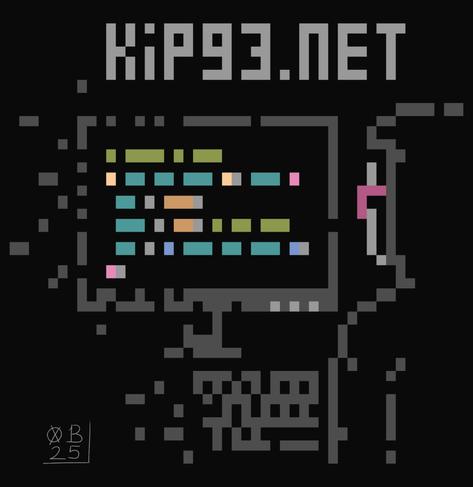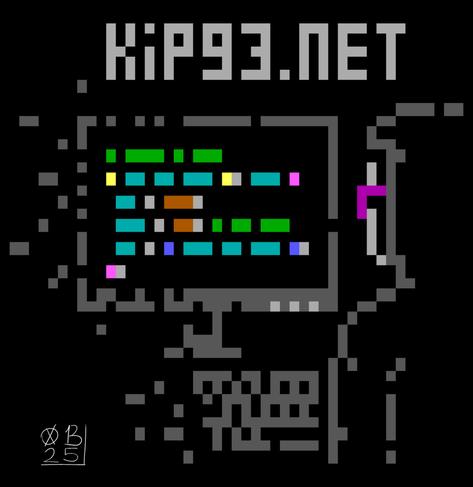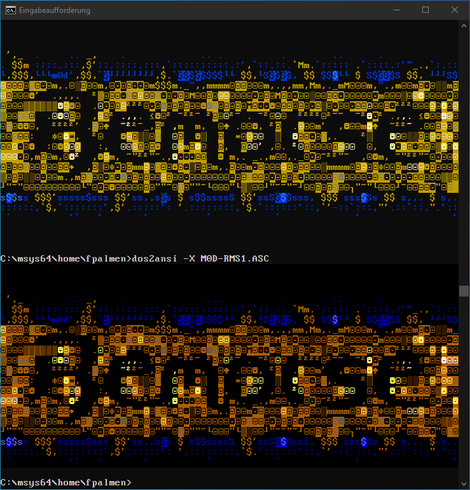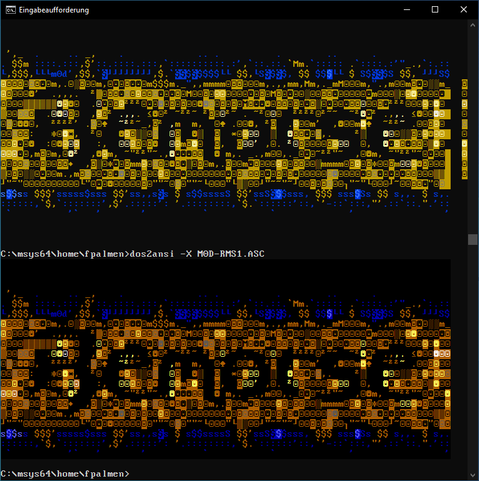Though I did have a lot of fun flirting with a crush at this job via the DOS-based #WordPerfect suite’s intraoffice email. The #CP437 character set’s proto-emoji smilies at 0x1 and 0x2 were super helpful for making clear our double-entendres.
#CP437
Mais um dia de passagem do garbage collector
https://retropolis.com.br/2025/05/19/mais-um-dia-de-passagem-do-garbage-collector/
#MundoRetro #6502 #BenEater #CP437 #DEC #GarbageCollector #IBMPC110 #Intel80386 #KenShirriff #LLaMa2 #MicrosoftBASIC #MSDOS #PDP11 #RaymondChen #TCPIP #Venix
All those words and they didn't even consider that it's a symbol to represent a physical margin/tab-stop from typewriters smh XP
https://blog.glyphdrawing.club/why-is-there-a-small-house-in-ibm-s-code-page-437/
The fun thing is: Changing the font in vconsole.conf works on boot for a moment while the system status messages are scrolling through.
… then the screen turns black for a moment and the TTY is presented for logging in – using a completely different font and codepage.
A font and codepage by the way, that do not support most characters that are supported by #CP437 and the font set in vconsole.conf.
#fbdev #vconsole #unimap #fbcon #keymaps #codepages … 3 hours of unproductive time wasted on research why one machine uses code page 437 (the Linux default code page for #tty) and the other machine doesn’t.
It is mentioned on several pages, that the default is #CP437, and how I can change this default, but it seems like a mystery or forbidden knowledge WHY it is changed, without me actively changing it.
It might have to do with the screen resolutions of those two devices, or that one is an #Intel #GPU and the other is #Nvidia. But i was not able to find anything of value.
Oh #fuck this shit.
#ModernLinuxProblems #MagicBullshit
Can the system please let ME be in control and not doing seemingly undocumented random shit that is not represented in any configuration and feels like it’s hidden in a blackbox?
That would be great, thanks.
You might think rendering #MSDOS #ANSIart on a modern #Windows is just fine because it still supports the old codepages, including #cp437. Well, sort of.
Some escape sequences are interpreted differently than ANSI.SYS did. In the worst case, you'll just see garbage. Most files are "sane" enough though, but even then, the default colors are "just wrong"...
#dos2ansi takes advantage of the 256color support available since Windows 10 to mimic the original #VGA palette. It also renders to a virtual canvas first, exactly emulating ANSI.SYS, and then uses a safe subset of ANSI for actual output. And it can read and display #SAUCE metadata. 😎
And in that house cleaning I rewrote my personal website (https://kip93.net), wanting to create a neofetch-y look to it. Whazaam! New drawing just dropped!
Higher res versions and sources available @ https://0x1b.art/2025-02-14_portrait
#PabloDraw #FediArt #DigitalArt #AnsiArt #CP437
This tool seems pretty useful for retrocomputing applications as it allows displaying code page 437 and IBM PC characters on modern terminal emulators.
As hard to believe as it is, the #Windows #Console still supports #CP437. And with the "virtual terminal processing" introduced in #Win10, it also accepts escape sequences, obviously even the more obscure ones from ANSI.SYS 😂
So, on a somewhat recent #Windows, you can display most #ANSIart without any extra tool, 'chcp 437' and 'type' is enough.
#dos2ansi will still be helpful:
* The output is sanitized, using *only* SGR sequences and a #Unicode encoding (so, also suitable to store in a file)
* Correlated here, some "exotic" MS-DOS #codepages are supported.
* On Windows > win10, colors will be corrected to the CGA/VGA palette (first screenshot)
* It will still work if your terminal width is different from what the input file assumes (second screenshot)
Screenshots show first 'type' with cp437 selected, then 'dos2ansi' 😎
And here's the upcoming "feature" for #dos2ansi v1.2: Attempt to format #SAUCE comments nicely. 🙈
It seems to be common practice to wrap comment lines in the middle of a word, so here's an attempt to be "smart" with this, adding an (optional) formatting heuristic:
* Empty lines are alway printed as is
* Same for lines containing "drawing" characters (anything >= 0xb0 in #cp437)
* Otherwise, if the last character of a line *and* the first of the next line are non-space, it's assumed to be one word
* Formatted lines are filled with as many complete words as possible, preserving spaces except at the end of the line
* More than two spaces at the end of a (raw) line are interpreted as a line break
Here are two real examples of the result, while the second already shows some classic shit-in-shit-out case (to fix this, I'd probably need a language model 😂)
New pre-release of dos2ansi: v0.2
* Works on #Windows, win32 binary (cross-compiled on #FreeBSD) attached
* Selectable input #codepage (so far only #cp437, #cp850 and #cp858)
* Selectable output format, #utf8, #utf16 or #utf16le, with or without #BOM
Still a few things to add, e.g. use #termcap/#terminfo or Windows Console API for "color output" when applicable ... we will see 😎



